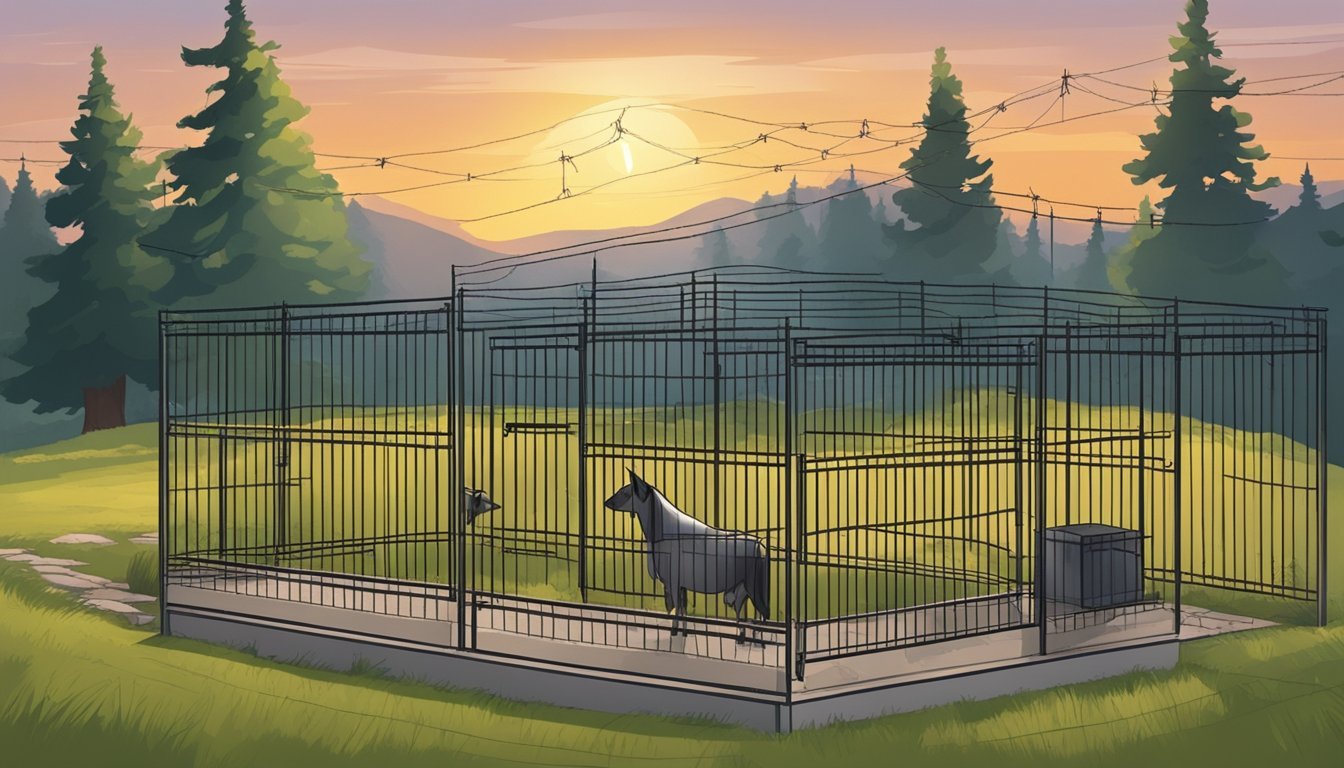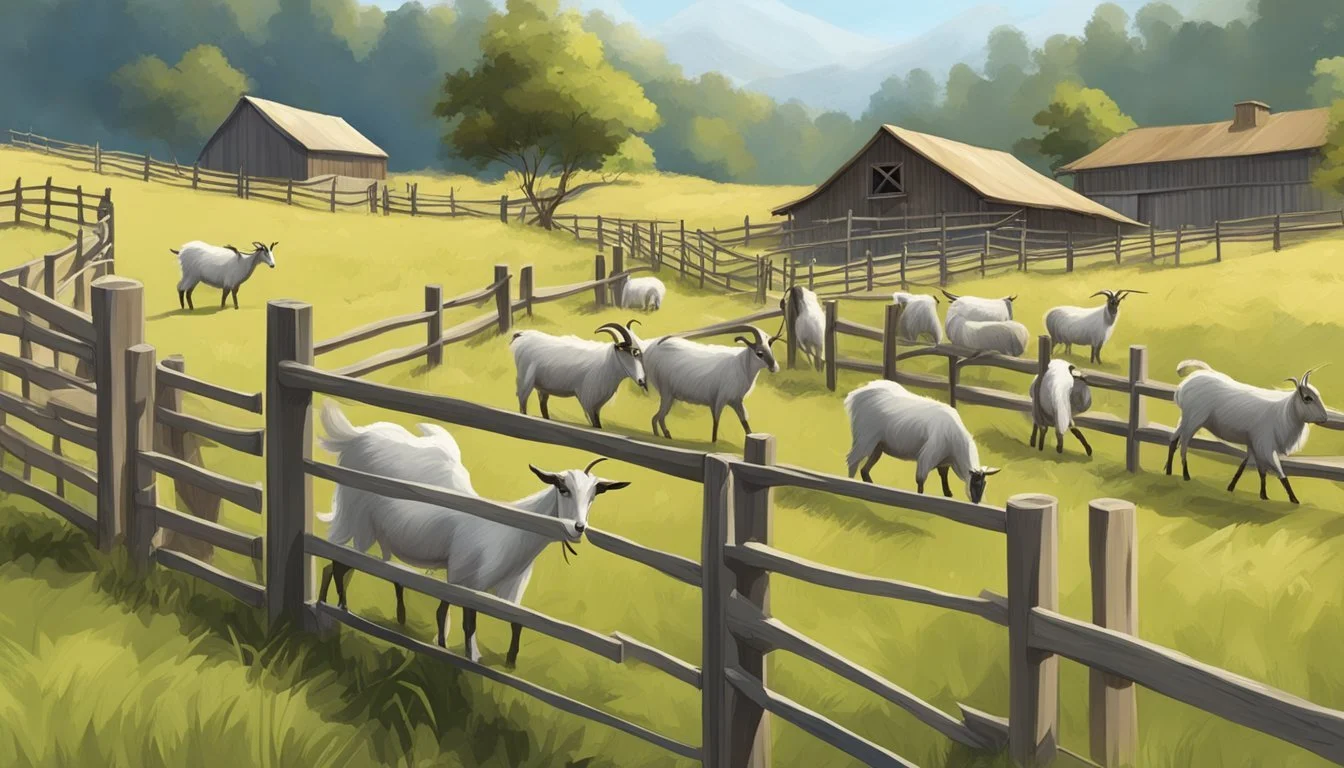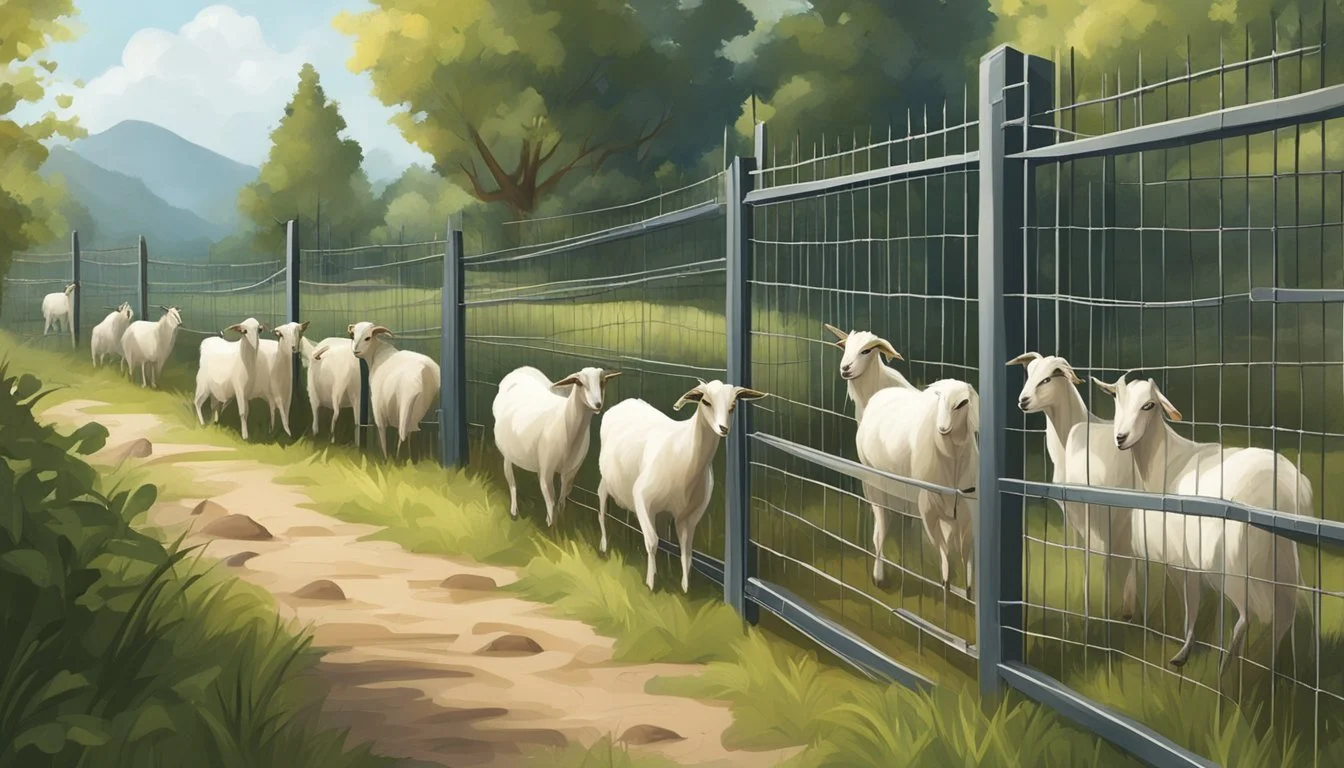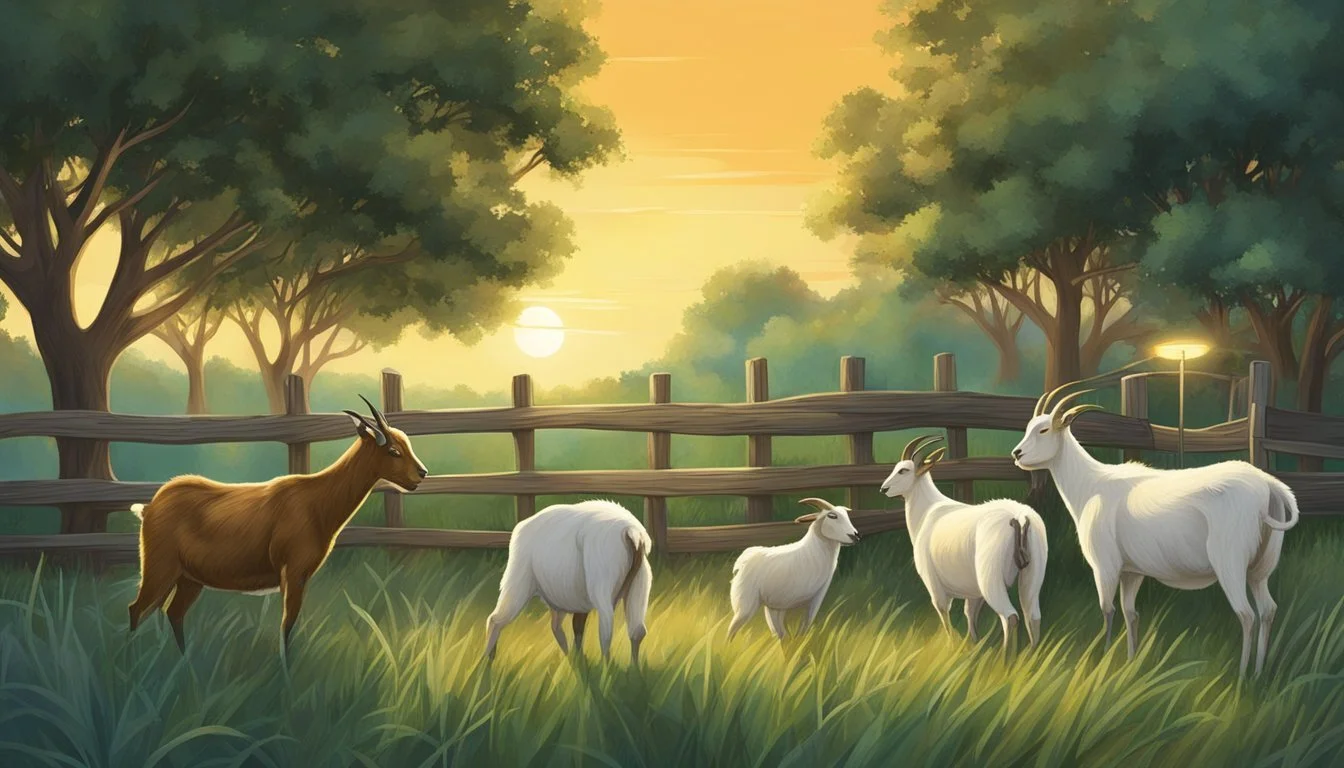How Do I Protect My Goats from Predators
Proven Strategies for Safety
Keeping goats safe from predators is an essential part of managing a herd. Predators can range from coyotes and foxes to birds of prey and even large cats, depending on the geographical location of the farm. Effective protection requires understanding the types of threats your goats face and implementing proactive measures. Secure fencing is the first line of defense, reducing the chances of predators gaining access to the goats.
Alongside physical barriers, implementing guard animals such as donkeys, llamas, and certain breeds of dogs can deter predators. These animals have natural instincts to protect the herd and can be an invaluable asset for a goat farmer. Surveillance and proper sheltering are further measures to ensure the safety of goats, especially during the night or when predator activity is high.
Farmers must consider both the environment and the behavior of their goats. A tethered goat is more vulnerable, so providing a movable barrier instead can offer security while allowing for necessary grazing. Attentive care and remaining vigilant to the presence of potential threats play vital roles in safeguarding the well-being of goats on the farm.
Understanding Goat Predators
To effectively protect goats, one must first identify the potential threats. Recognizing common predators and understanding their behaviors are crucial steps in safeguarding livestock.
Common Predators
Goats face various natural adversaries across different habitats. Predators of goats include, but are not limited to:
Coyotes: Opportunistic hunters known to target small livestock.
Foxes: Smaller than coyotes, yet capable of preying on young goats.
Bears: Though less common, bears can pose a significant threat due to their size and power.
Bobcats: Stealthy predators capable of killing goats, especially in areas with dense cover.
Eagles: Birds of prey that can pose a danger to kid goats.
Wolves: Pack hunters that can take down larger prey, including adult goats.
Mountain Lions: Solitary and powerful, capable of preying on goats of all sizes.
Ravens and Black Vultures: Birds that typically scavenge, but may attack weak or young goats.
Owls: Nocturnal predators that can prey on smaller goats.
Stray Dogs: Domestic dogs that have gone feral and hunt in packs, capable of killing goats.
Predator Behavior and Threat Levels
Understanding the behavior and threat level of each predator can inform appropriate protective measures:
Coyotes and Wolves typically hunt in packs, increasing their threat level due to the coordinated attack on livestock.
Foxes, Bobcats, and Mountain Lions rely on stealth and the element of surprise, striking solitary goats that stray from the herd.
Bears generally pose a threat due to their search for food, which can lead to opportunistic predation.
Eagles, Owls, and Vultures present a higher risk to smaller goats, especially in open areas with limited shelter.
Stray Dogs can have varied behavior patterns, ranging from individual attacks to pack hunting, posing an unpredictable risk to goat herds.
By understanding the specific behaviors and threat levels associated with these predators, goat owners can develop more effective defense strategies to protect their livestock.
Creating a Safe Shelter
When selecting and securing a shelter for goats, the primary objectives are to design a structure that provides safety and comfort while ensuring it is fortified against predators.
Shelter Design
A well-designed shelter for goats should be sturdy and spacious enough to accommodate the entire herd. It must provide protection from extreme weather and have proper ventilation to ensure a healthy environment. Indoor areas should be free of sharp edges or objects that could harm the goats. Design considerations include:
Size: Adequate space for each goat to rest and move comfortably.
Bedding: Clean, dry straw or wood shavings to maintain warmth and absorb moisture.
Insulation: Proper insulation to protect against cold temperatures.
Predator Proofing Your Shelter
Predator-proofing is critical to goat safety. Predators can range from small mammals to larger carnivores, so shelters must be secure.
Fencing: A strong perimeter fence is essential. Woven wire fences or sturdy wooden panels can prevent predators from entering. Electric fences or hot fences can add an extra layer of security. They should be well-maintained and checked regularly for any damage or power loss.
Physical Barriers: A predator-proof goat pen may include buried fence lines to thwart digging predators.
Locks: Doors must be equipped with secure locks that cannot be easily manipulated by predators like raccoons.
Electric fencing should be installed following manufacturer guidelines to ensure it effectively deters predators. It's important to periodically test the electric fences to confirm they are functioning properly. Moreover, a shelter with strong, secure doors and windows is crucial to ensure no predator finds a way inside.
Fencing and Perimeter Security
Protecting goats from predators begins with robust fencing and perimeter security measures. This section explores the types of fences suitable for goat pens, maintenance practices to ensure longevity and effectiveness, and the specifics of implementing electric fencing.
Types of Fences
Woven Wire Fences are often a top choice for securing goats, providing a sturdy barrier that ensures both containment and deterrence. When constructed properly, they can prevent most predators from entering the enclosure. Electric Fences add an additional layer of protection, delivering a gentle but persuasive shock to potential predators, discouraging attempts to breach the perimeter.
Maintaining Fences
Regular inspection and maintenance are critical. Owners should check for damage, such as broken wires or posts, and promptly repair them to maintain the fence’s integrity. Keeping the fence line clear of debris and vegetation minimizes the risk of shorts in electric fences and preserves visibility.
Electric Fence Implementation
To properly install electric fencing, it's important to use materials specifically designed for it. The fence should be at least four to six feet high, and the charge must be strong enough to deter predators but safe for the goats. The grounding system needs to meet specific requirements to be effective and safe.
Goat Care and Supervision
To safeguard your goat herd effectively, a regimen of attentive care and strategic supervision is a fundamental requirement. This includes securing regular health assessments and providing meticulous oversight during grazing activities to prevent predation.
Regular Check-Ups
Goats require consistent health monitoring to prevent diseases that can make them more susceptible to predators. A veterinarian should conduct check-ups at least bi-annually to ensure the goats are in good health. This includes checking for signs of foot rot or other illnesses which could hinder their ability to escape predators.
Supervised Grazing
Employing rotational grazing can benefit not only the land but also enhance the safety of a goat herd. It's beneficial to have a designated individual overseeing the goats as they graze, to quickly identify and respond to any potential threats. During this time, it's imperative to be vigilant as predators often observe patterns and could attempt to exploit unsupervised moments.
Use of Guard Animals
Incorporating guard animals into a livestock protection strategy can be a sustainable approach to mitigating predator attacks on goat herds. These animals, when properly trained, serve as proactive defenders, particularly against common threats like coyotes and stray dogs.
Pros and Cons of Guard Animals
Pros:
Effective Flock Protection: Guard animals such as Great Pyrenees, donkeys, and llamas are known for their protective instincts and can significantly decrease the risk of predation.
Constant Vigilance: Unlike human supervision, guard animals offer 24/7 monitoring of the herd, providing continuous surveillance against different predators.
Cons:
Training Time and Costs: Proper training of livestock guardian dogs and other guardian animals can be time-consuming and sometimes costly.
Potential for Aggression: If not correctly trained, some guard animals might show aggression not just to threats but to farm staff or non-threatening wildlife.
Training and Care for Guard Animals
Training: Trainable breeds like the Great Pyrenees or Akbash need consistent and early exposure to the herd they will protect. They must learn to distinguish between family members, other farm animals, and would-be predators to ensure a protective but safe behavior towards the goats.
Care: Guard animals require a commitment to ongoing care, which includes proper feeding, housing, and veterinary checks. Especially in harsh weather conditions, they may require more feed or shelter similar to the livestock they guard. Regular care ensures the animals remain healthy and alert in their role as protectors.
Additional Protective Measures
When protecting goats from predators, incorporating proactive strategies is key. Two critical measures—a robust deterrent light system and specific practices during kidding season—significantly reduce the risk of predator attacks.
Deterrent Lights
Deterrent lights serve as an effective measure to discourage predators. These lights are designed to mimic the appearance of another predator's eyes, which can make would-be attackers wary of approaching the area. Strategically placing deterrent lights around the perimeter of the goat enclosure can create an illusion of human activity or presence of another predator, thereby providing an additional layer of security against nocturnal predators.
Safety During Kidding Season
The kidding season is a vulnerable time for goats, as predators often target newborn kids. During this period, extra vigilance is required. Ensuring that does are in a secure, enclosed space can prevent attacks. Having a designated and well-protected kidding area within the enclosure, equipped with ample lighting and close monitoring, can help shield the does and their offspring from the threat of predators.
Goat Behavioral Adaptations
Goats have evolved several behaviors to improve their survival against predators. These adaptations often involve social strategies and physical defense mechanisms.
Herd Behavior
Goats are social animals that often rely on the strength of the group for protection. The herd moves and feeds together, making it more difficult for predators to single out an individual. Goats use this collective vigilance to spot threats early and react as a unit. When threatened, they have a tendency to bunch up, reducing the likelihood of attack for any single goat. The young are usually at the center of the herd, offering them additional protection from predators.
Defensive Capabilities
While goats may not be the first animal that comes to mind for their defensive prowess, they possess notable capabilities to fend off attackers. Mature goats can use their horns to trample or strike if they have no other option but to fight. Additionally, goats are known for their ability to stand on their hind legs to increase their stature, which simultaneously allows them to reach higher vegetation and appear larger to intimidate potential attackers. They may not be as aggressive as some other livestock in defending themselves, but they can still present a challenge to smaller predators.
Dealing with Incidents
When goat owners face predator incidents, swift and knowledgeable action is essential. Particularly, understanding how to administer first aid and analyze the attack to prevent future occurrences are critical steps.
First Aid for Goat Wounds
If a goat sustains wounds from a predator attack, immediate care is crucial to prevent infection and promote healing. Owners should have a first aid kit at hand that includes items such as antiseptic spray, gauze, and vet wrap. Pressure should be applied to any bleeding wound to control blood loss. Once bleeding is under control, clean the wound thoroughly with saline solution or mild antiseptic to remove debris and bacteria. Contact a veterinarian if the goat's wounds are severe, as professional medical treatment may be necessary, including stitches or antibiotics.
Learning From Predator Attacks
Analyzing a predator attack can provide invaluable insights, helping to strengthen preventive measures. After ensuring the safety and care of affected goats, examining the scene of the incident for signs of how the predator breached the defenses is important. Identify patterns or weaknesses in the current protection plan, such as gaps beneath fencing or overhanging branches that may have allowed access. Use this information to fortify enclosures, improve shelter designs, or adjust procedures aimed at deterring predators. Effective analysis and adaptation can reduce the likelihood of future incidents with goats and predators.
Preventing Future Attacks
Effectively protecting goats from predators requires analyzing vulnerabilities and implementing continuous improvement strategies. Specific measures can significantly reduce the likelihood of subsequent predator attacks.
Analyzing Past Vulnerabilities
To safeguard their goats, farmers must first assess how previous predator attacks occurred. It often starts with a thorough inspection of the fencing. If predators breached the perimeter, the fencing may need reinforcement or a complete overhaul. The introduction of an electric fence can be a strong deterrent, passing a mild shock to any would-be intruders and creating a more robust barrier. Additionally, evaluating the shelter can reveal points of entry that need securing, especially during nighttime when most predators are active.
Continuous Improvement Strategies
A strategic approach involves continuous improvement of the protective measures in place. This could include:
Training for goats to recognize and avoid electric fences.
The use of deterrent lights that disrupt predators' vision and discourage their approach.
Enlisting livestock guardian dogs, which serve as dedicated protectors of goat herds, repelling many common predators.
It's also crucial to keep up with maintenance, ensuring that fences are intact and shelters are secure. These measures, along with the vigilance of a guardian presence, can reduce the threat of predator attacks on goats substantially.
Legal and Ethical Considerations
When protecting goats from predators, it is critical to consider legal frameworks governing wildlife and ethical practices that promote coexistence. Adherence to wildlife laws ensures compliance with state and federal regulations, non-lethal deterrent strategies emphasize humane techniques, and maintaining good community relations fosters a harmonious living environment for both homestead animals and local wildlife.
Wildlife Laws
Individuals must adhere to federal and state wildlife protection laws that may restrict certain actions against predators. It's crucial to research which species are legally protected before implementing any measures. For instance, shooting a predator may be illegal if it is an endangered species. One must inquire with local authorities or a wildlife agency to understand applicable laws and permits required to address predator issues legally.
Non-Lethal Deterrent Strategies
Employing non-lethal deterrents is not only an ethical approach to protect goats but also a method largely supported by animal welfare advocates. Here are some commonly recommended strategies:
Installing electric fences is effective in preventing predator incursions and is considered humane when operated correctly.
Using guard animals, such as donkeys and llamas, can provide a natural protective presence on a homestead without inflicting harm on the predator populations.
Community Relations
Maintaining positive relations within one's community helps in the sharing of best practices on predator deterrence, and it ensures neighbors are aware and respectful of the measures in place. Cooperation can help manage local predator populations without resorting to extremes, thus protecting one's livestock ethically and responsibly while upholding community standards. It's important for goat owners to communicate and potentially collaborate with neighboring homesteads to develop shared strategies for predator management.
Conclusion
Protecting goats from predators is a multifaceted approach that requires vigilance and preparation. Key strategies include:
Secure Shelter: A sturdy, well-constructed shelter provides necessary refuge and should be built with high-quality materials to withstand attempted intrusions.
Fencing: Implementing predator-proof fencing, such as electric fencing, offers a durable barrier, safeguarding goats especially during vulnerable periods like dusk and dawn.
Guard Animals: The presence of larger animals with protective instincts, such as donkeys and llamas, can deter predators effectively.
Addressing the temperament of goats and their tendency to herd can enhance these measures. Goats' natural alertness can be an asset, but it requires the support of human intervention and additional protective methods.
By implementing these strategies consistently, one can keep goats safe from predators, thus maintaining a secure and peaceful environment for these valuable farm animals.








